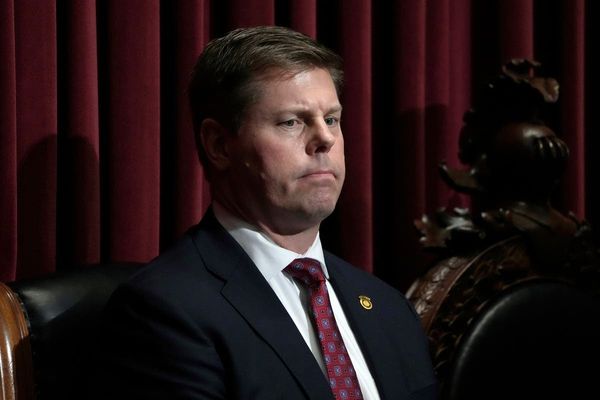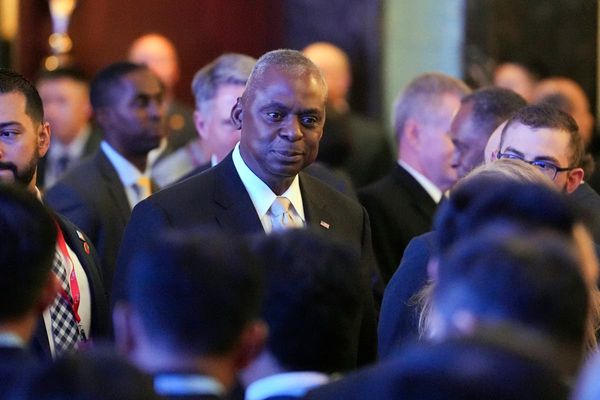
National parks across the US will close to visitors as soon as Sunday if Congress is unable to avert a government shutdown, the Department of Interior has announced.
“Gates will be locked, visitor centers will be closed, and thousands of park rangers will be furloughed,” the interior department wrote in a news release on Friday. “Accordingly, the public will be encouraged not to visit sites during the period of lapse in appropriations out of consideration for protection of natural and cultural resources, as well as visitor safety.”
The plan, outlined in an updated National Parks Service (NPS) contingency plan, emphasizes the need to protect park resources and ensure visitor health and safety.
The decision marks a notable departure from how the national park system was handled under the Trump administration during the last government shutdown. During a funding stalemate that stretched for 35 days through the end of 2018 into 2019, officials ordered parks to remain accessible to the public while they were without key staff, resources and services.
That decision culminated in destruction and chaos at some of the country’s most cherished landmarks such as Joshua Tree national park, with high levels of vandalism, accumulation of human waste and trash and significant risks to ecosystems and unsupervised visitors.
With less than two days to go before government funding runs out and Republican lawmakers at an impasse, a shutdown appears highly likely.
At a press conference on Thursday, the interior department said it had learned its lesson from the 2018 shutdown and the damaging decisions made by Trump’s interior department.
Friday’s updated contingency plan authorizes the use of visitor entrance fees – which are kept separate from the operational budget and intended by law to fund improvements in the parks and chip away at the $22bn maintenance backlog – to support emergency operations, sanitation and campground operations that would be threatened by a prolonged closure.
Some parks will be allowed to stay open using funds provided by state, local or tribal governments, or through donations. The governors of Arizona and Utah have already committed to keep high-traffic destinations such as the Grand Canyon and Zion open, highlighting the important economic benefits these parks provide to their states and to local gateway communities.
But the document also indicates that areas where it is “impossible or impractical to restrict public access”, park areas – roads, lookouts, trails and campgrounds – will be left unsupervised, a decision that has drawn some criticism.
“The interior department’s guidance to leave areas of some national parks like campgrounds open, with only minimal staff, is concerning,” said Theresa Pierno, president and CEO for the advocacy non-profit National Parks Conservation Association (NPCA) in a written statement. While the organization supported the interior department’s decision to close parks, they warned of the dangers posed by allowing the public any unfettered access.
“We saw a similar scenario play out just a few years ago, resulting in Joshua trees being cut down, park buildings vandalized, trash piled up and visitor safety jeopardized,” Pierno said. “We can’t allow this to happen again.”
Joshua Tree was among the most visibly affected by the decision to remain open in 2018, when its wild desert landscapes were overrun with visitors and illegal activity. The Guardian revealed this week that hundreds of emails sent between park officials at the time show how the park’s superintendent tried to close part-way through the shutdown and was overruled by administration officials.
Along with ordering the park to stay open, David Bernhardt, the acting secretary of interior appointed by former president Trump in 2019, also altered the parks’ contingency plans, ordering superintendents to draw from those set-aside entrance fee funds to support operations.
While the new directive from the Biden administration’s interior department supports closures during shutdowns, parks are still tied to shifts in political power and perspective. Contingency plans can be altered and these high-stakes decisions are left to political appointees rather than made within the parks service. House Republicans are also calling for significant budget cuts for the National Parks Service, which, if passed, could critically alter its operations even as the agency struggles to meet the challenges posed by surges in visitation.
“The bottom line is that our parks and communities should not be put in this situation in the first place,” Pierno said. “Congress must come to an agreement to keep the government open and our parks adequately funded and staffed.”







